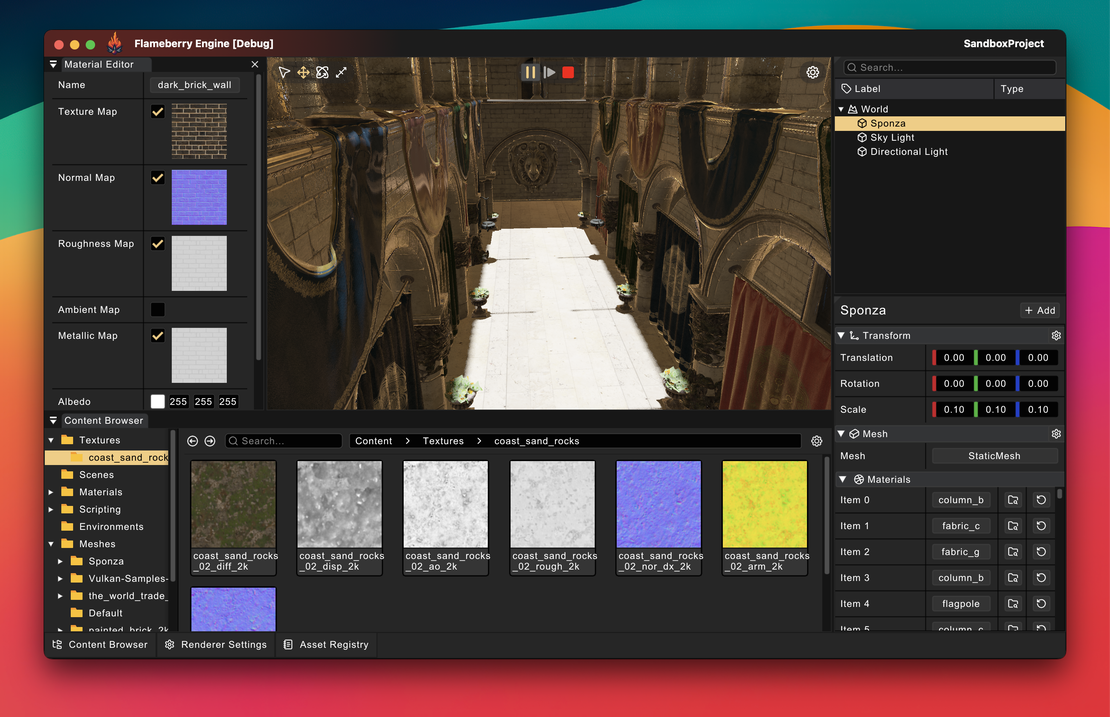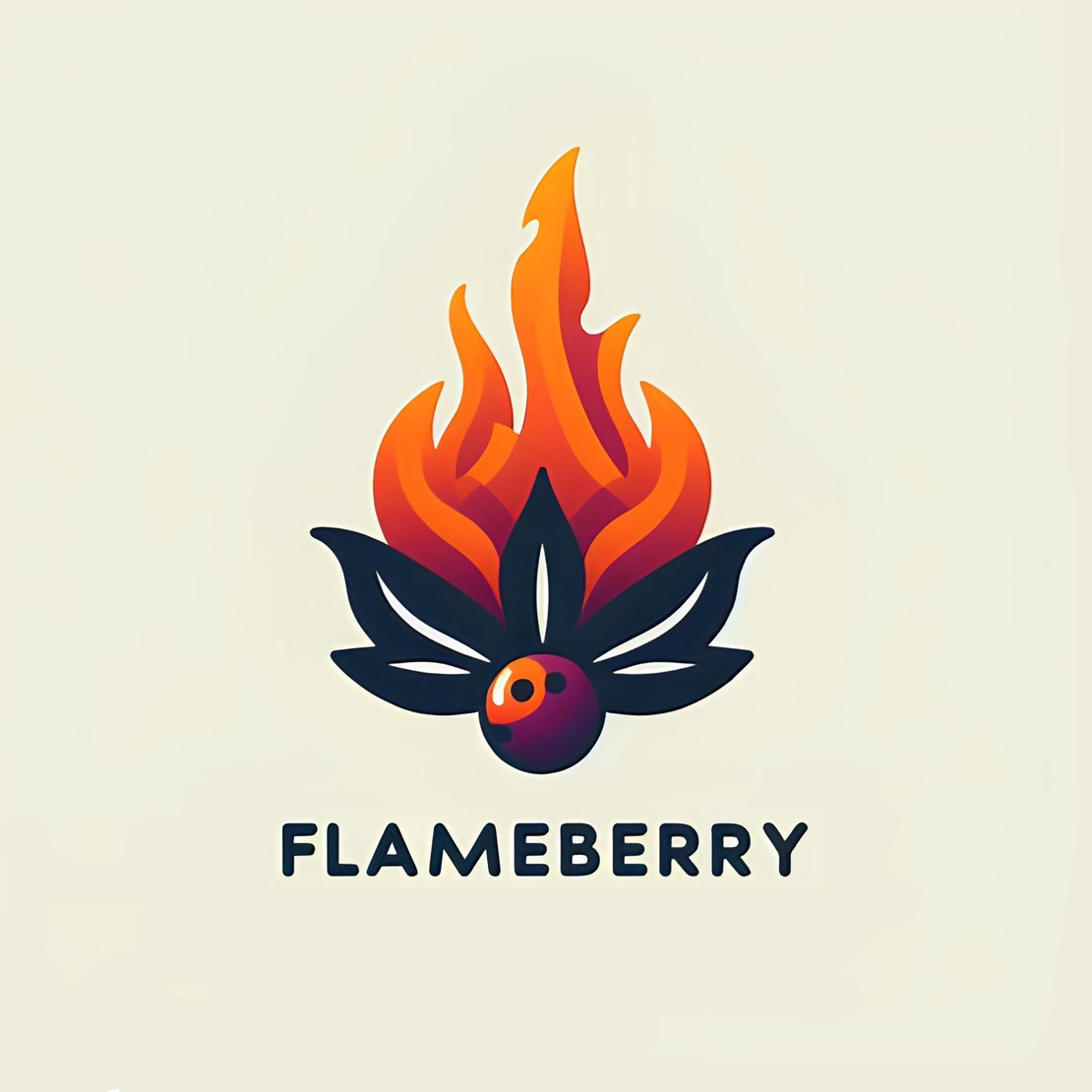The Ultimate Game Engine to build Games or Experiment in the World of Graphics.
Flameberry Engine is a C++ Game Engine based upon the Vulkan Graphics API and is currently under development. The goal is to build a capable fast and efficient 3D game engine which can ship games on platforms like macOS, Windows, and Linux, and maybe Consoles, PlayStations, Android and iOS in the future!
Github Repository

Highlights of Flameberry Engine
- Graphics: Support for PBR, Vulkan, and OpenGL.
- Physics Engine: Integration with Nvidia PhysX for realistic in-game physics.
- Built-In ECS: Streamlined development with a powerful Entity-Component-System.
- Material System: Complete control over textures for a customized visual experience.
- Environment Mapping: Elevate gaming atmospheres with HDR-based Environment Mapping.
- Asset Management: Simplified handling with a Basic Asset Manager for efficient resource management.
- C# Scripting: Blend C# and C++ seamlessly for scripting.

How do I get the Flameberry Engine?
Getting the Flameberry Engine to work on your system is pretty easy. Follow the given steps:
- Clone the Official Flameberry repository.
- Open your terminal and run the Scripts/Setup.py script.
- Open the generated project file (inside the ‘build’ directory) using an IDE and build it and run it.

The Vision
The vision is to push the graphics rendering ability of Flameberry, focusing on precision and realism, trying to reach as close as it can get to the cutting-edge standards, with upcoming features like:
- Global Illumination: Implementing advanced algorithms for accurate Global Illumination, ensuring scenes are authentically lit with global lighting interactions.
- Optimized Bloom Techniques: Utilizing optimized algorithms for bloom effects, enhancing visual aesthetics without compromising performance.
- Efficient Signed Distance Fields: Leveraging Signed Distance Fields for mesh representation, optimizing rendering pipelines for lifelike object rendering.
- Ray Tracing: Pioneering the integration of Ray Tracing technology for pixel-perfect rendering, unlocking new levels of graphical fidelity and realism.